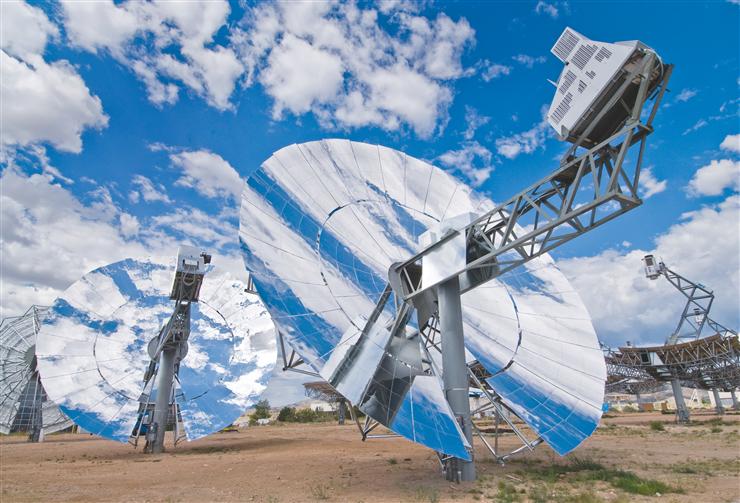 The recently approved Imperial Valley project will place 19,000 Stirling Suncatchers on desert land.Photo: Stirling Energy SystemsInterior Secretary Ken Salazar on Tuesday gave the green light to the first two big solar power plants to be built on federal land in the California desert, promising more approvals of solar projects in the coming weeks.
The recently approved Imperial Valley project will place 19,000 Stirling Suncatchers on desert land.Photo: Stirling Energy SystemsInterior Secretary Ken Salazar on Tuesday gave the green light to the first two big solar power plants to be built on federal land in the California desert, promising more approvals of solar projects in the coming weeks.
The granting of leases to Tessera Solar’s massive 709-megawatt Imperial Valley Solar Project and to a smaller 45-megawatt photovoltaic farm to be built by Chevron come four years after the solar land rush began in the Mojave Desert.
With nearly 200 applications filed on hundreds of thousands of acres of Bureau of Land Management (BLM) property, the federal government soon became overwhelmed trying to weed out viable projects from speculators. Environmentalists, meanwhile, grew alarmed at the potential impact of such huge industrial projects on a plethora of imperiled wildlife, as well as on water supplies and desert vistas.
The Obama administration beefed up BLM staff devoted to solar projects and began collaborating with California agencies to streamline the approval process.
“Today’s projects are proof that we can cut red tape without cutting corners,” Salazar said Tuesday during a press conference.
The looming expiration of federal tax incentives for large renewable energy projects also lit a fire under state and federal regulators to license power plants so that developers could begin construction by the end of the year.
For instance, since Aug. 25, the California Energy Commission has licensed six solar thermal power plants that would cover some 39 square miles of desert land and generate 2,829 megawatts. That’s nearly six times as much solar capacity as was installed in the United States last year.
“I am excited to join Secretary Salazar today in announcing the first solar projects to ever get permits on federal land, both of which will be located in the Golden State,” California Gov. Arnold Schwarzenegger said in a statement. “Today’s announcement only further cements California’s national leadership in renewable energy development.”
Some environmental groups initially raised concerns about the Imperial Valley project, which will place 19,000, 38-foot by 40-foot Stirling solar dishes on 6,400 acres of desert land near the Mexican border east of San Diego. Of particular concern was the project’s impact on the flat-tailed horn lizard and the Peninsular bighorn sheep. A Native American tribe, meanwhile, objected to the power plant’s presence on their ancestral lands.
But Johanna Wald, a senior attorney at the Natural Resources Defense Council in San Francisco, said the developer’s willingness to shrink the project to mitigate degradation of wildlife habitat and to minimize its water consumption won over her group and other environmentalists.
“The company sat down with NRDC and our conservation partners and agreed to a number of important measures that were above and beyond the requirements that were imposed by the state and federal regulators,” Wald said in an interview.
Nevertheless, the Sierra Club, the Center for Biological Diversity, and Native Americans have continued to object to the Imperial Valley solar farm.
Wald singled out the much smaller Chevron project as one where developers’ selection of a site near transmission lines and away from protected wildlife paid off in the unanimous support from major environmental groups.
“Chevron,” she said, “is a project we all would agree was smart from the start.”



